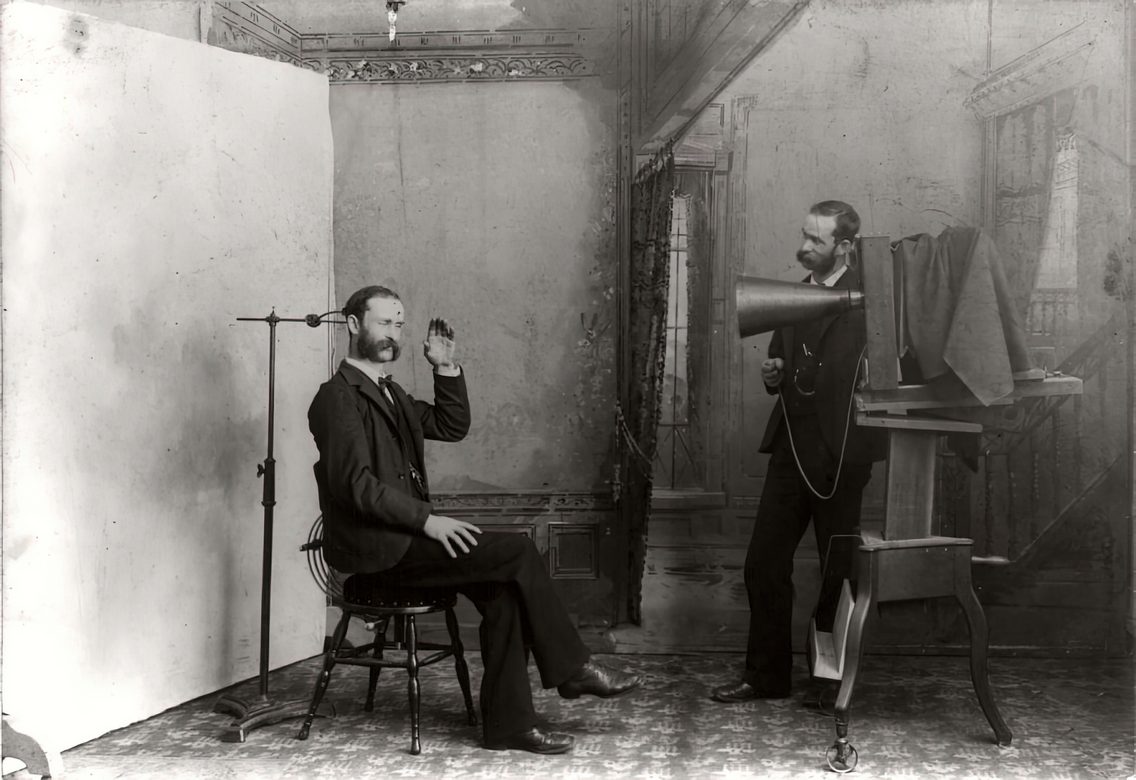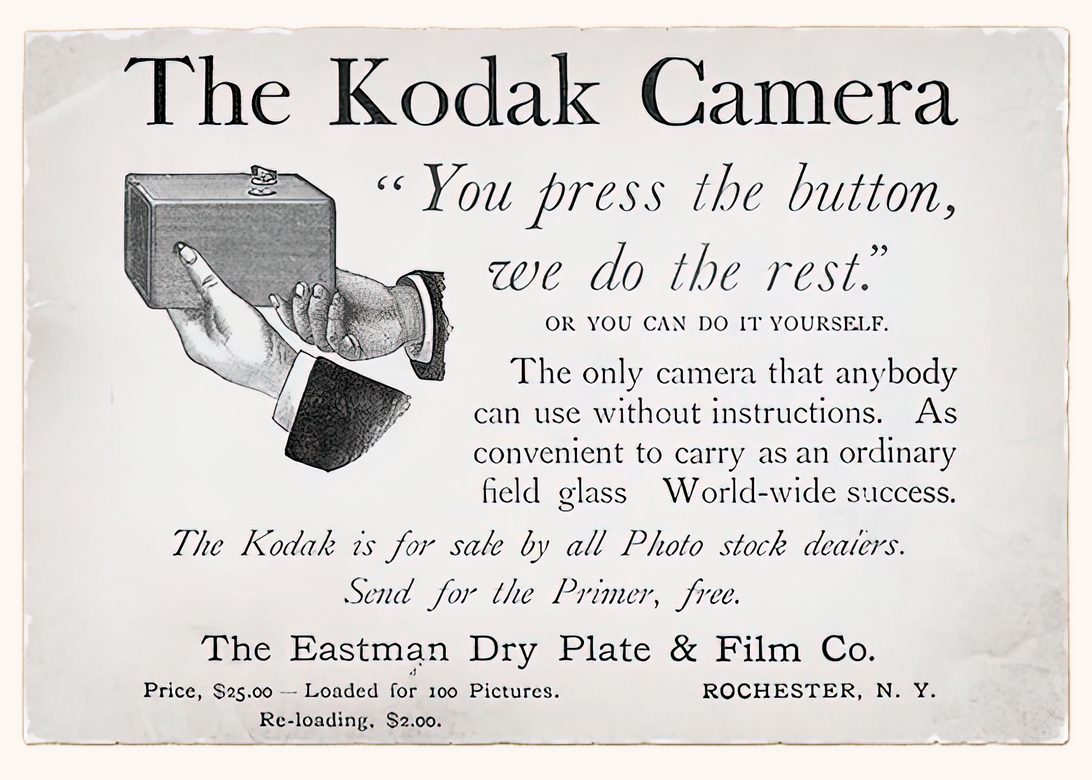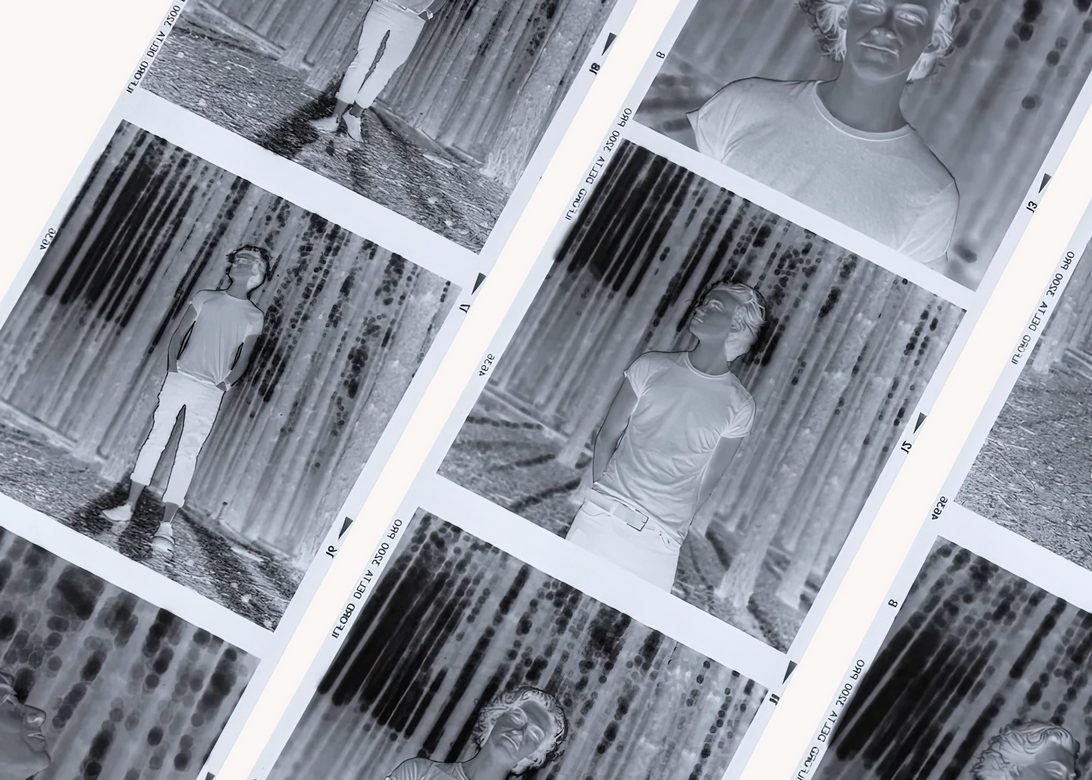
The Photography timeline, up to present times
As the Camera Obscura becomes a reality, the possibility of fixing an image on metal or paper becomes a reality:
Photography is born!
1814 |
Joseph Nicéphore Niépce (1765-1833) achieves the first photographic image with Camera Obscura - however - the image required eight hours of light exposure and later faded. |
1819 |
Sir John Herschel, an accomplished scientist and astronomer - in one of his experiments as a chemist - discovered the photographic fixer, based on the action of hyposulfite of soda on otherwise insoluble silver salts, which led to the use of "hypo" as a fixing agent in photography. It was Herschel who coined the use of the terms "photography", "positive", and "negative" to refer to photographic images. |
1826 |
First photo of Joseph Nicéphore Niépce done with the Camera Obscura (adjusted from the 'negative plate' on the left) which survived because it was fixed. |
1835 |
The English scientist Henry Fox Talbot (1800-77) experiments the salted paper and calotype processes, precursors of the photographic negative. |
1837 |
Louis Daguerre's first daguerreotype, taken in his studio, the first image that was fixed and did not fade. It needed 'only' under thirty minutes of light exposure. |
1844 |
Louis Daguerre's portrait taken by Jean-Baptiste Sabatier-Blot. |
1838 |
Boulevard du Temple, Paris - Daguerreotype taken by Louis Daguerre (1787-1851): one year later he had improved greatly, needing only about ten minutes of exposure, and we can see two persons in the image, in the lower left: a shoeshiner and his customer. |
1839 |
The French Photographer M.De St-Croix exposed a silver-coated copper plate for several minutes to record a downtown London image. |
1839 |
A vintage Daguerre-Giroux camera, after having been restored in the Reial Acadèmia de Ciènces y Arts de Barcelona. |
1849 |
Edgar Allan Poe and an unknown kid on a rocking horse: the Daguerreotype becomes an everyday reality, as exposure times become shorter and shorter. |
1893 |
The Photographic Studio. Since exposure times were quite long, it was important to hold as still as possible the head of the portrayed person. This image seems to be a satire made in those times, though. |
1898 ca. |
The British-made 'Victo folding field Half-Plate camera' produced by Houghton from ca. 1898. Half-Plate is the negative size, being something in between the 4x5" and a 5x7" photographic glass plate. A small format for the end of the 19th century, as final prints on paper were made on contact. |
1888 |
"You press the button, ... and we do the rest". Slogan by Eastman Dry Plate and Film Co. presenting its first consumer-type photographic camera: it came already loaded with film for 100 pictures, and could be reloaded. |
1914 |
First Leica Wetzlar camera is created by its inventor Oskar Barnack and becomes available to the public. Small, light and with good lenses, very portable. |
1929 |
The 120 film rolls guarantee a strong portability, and Rolleiflex takes advantage of this with its light cameras with double lenses: one lens for framing and focusing, the other for the actual photography. Image is seen right/left reversed, as in the Box type Camera Obscura, but you get used to it. |
1932 |
The idea of using the 35 mm film is to take advantage of the film that has not been used by the cinema industry, and always have it available. The rangefinder feature is added to the Leica II in 1932, and that year both rangefinder and viewfinder cameras became available with interchangeable lenses. |
1948 |
The American scientist Edwin Land unveils the first commercial instant camera, based on the invention of direct positive photography patented in 1939 by the chemist Rott Andor, and in a few years the Polaroid Corporation produces several models of consumer-friendly instant cameras and film. |
1957 |
The Hasselblad 1000F 6x6 medium format camera is replaced by the 500C. Thanks to the use of 120 film, the fast changing film magazines, excellent optics and a through-the-lens viewing, it becomes an immediate hit for all photographers, even with its high price. |
1960's |
For nearly 30 years, Nikon's F-series SLRs (Single Lens Reflex) cameras will be the most widely used small-format cameras among professional photographers, and were used in Space Programs by the NASA. |
1972 |
SX-70, the most developed and appreciated Polaroid camera. |
1981 |
Photography goes DIGITAL. The Digital Still Camera Sony Mavica is the first commercially available camera which would provide electronic digital images and store them on a 3 1/2 Floppy Disk, with a resolution of 570x490 pixels. |
1996 |
Kodak DC 20, the first digital camera with a strong success in the market. Good price and on-line sales (!!!) helped its diffusion. Specifications: 493x373 pixels resolution, 8 pictures, 1 MB storage, and a weight of 110 g for full portability. |
Copyright by Roberto Delpiano 2022-2025 - please visit my website www.delpiano.com
![Joseph Nicéphore Niépce: [1827] - Point de vue du Gras - first successful permanent photograph from nature - original photographic tin plate done with 8 hours exposure - The result was achieved by dissolving bitumen of Judea, a natural tar known since antiquity, in lavender oil, and spread a thin layer of this solution on a polished pewter plate - Harry Ransom Center, Texas](../images_db/Joseph_Nicephore_Niepce_1827__x050a__Ph_Niepce_964_0000_0001_plate_recto_2020_a1.jpg)

![Joseph Nicéphore Niépce: [1827] - Point de vue du Gras - reproduction and enhanced image - 8 hours exposure - Harry Ransom Center, Texas](../images_db/Joseph_Nicephore_Niepce_1826__x051_View_from_the_Window_at_Le_Gras.jpg)
![Henry Fox Talbot: [1835] - Latticed window photo negative](../images_db/Henry_Fox_Talbot_1835__x282_Latticed_window_photo_negative__1937_0361-gp.jpg)
![Henry Fox Talbot: [1835] - Latticed window final positive image](../images_db/Henry_Fox_Talbot_1835__x283_Latticed_window_final_positive_image__9f1aff-gp.jpg)
![Louis Daguerre: [1837] - First photograph in Daguerre's studio - 30 minutes exposure - Daguerreotype photograph](../images_db/Louis_Daguerre_1837__x053_Daguerreotype_in_Daguerre_Atelier.jpg)
![Jean-Baptiste Sabatier-Blot: [1844] - Portrait of Louis Mandé Daguerre - Daguerreotype photograph - George Eastman Museum](../images_db/Jean-Baptiste-Sabatier-Blot_1844__x056_Daguerreotype_Portrait-of-Louis-Daguerre_1.jpg)
![Louis Daguerre: [1838] - Boulevard du Temple - 12 AM - 10 minutes exposure - Daguerreotype photograph](../images_db/Louis_Daguerre_1838__x055_Boulevard_du_Temple__midi__Daguerre.jpg)
![[1839] - London Charing Cross Daguerreotype - Daguerreotype photography](../images_db/x242__London_Charing_Cross_Daguerreotype__07202023_civil_1008252.jpg)
![[1839] - Daguerreotype Giroux Camera - Back](../images_db/x240a__Daguerreotype_Camera__Back__REST_DAG_CAM_024_DSC6158_PETITA-gp1_5x7.jpg)
![[1839] - Daguerreotype Giroux Camera - Front](../images_db/x240__Daguerreotype_Camera__Front__REST_DAG_CAM_008_DSC6138_petita-gp1_5x7.jpg)
![[1849] - Portrait of Edgar Allan Poe - Daguerreotype photography - J.Paul Getty Musem, Los Angeles](../images_db/x238__Unknown_maker__American__Edgar_Allan_Poe_Daguerreotype_portrait__Goog1.jpg)
![Albert Bisbee: [ca. 1855] - Child on a Rocking Horse - Daguerreotype photography - Smithsonian American Art Museum](../images_db/Albert_Bisbee_1855ca__x235_Rocking_Child__Daguerreotype__AIV1Qg-gp1.jpg)

![[ca. 1898] - Houghton Victo half plate camera](../images_db/x241__Houghton_Victo_half_plate_camera_1898ca_c27ccf_o-gp1_5x7.jpg)

![[1888] - The Original Kodak, introduced by George Eastman - Preloaded with film for 100 snapshots - Smithsonian](../images_db/x175__The-Original-Kodak--introduced-by-George-Eastman-in-1888--colcamera-gp1_5x7.jpg)
![[1914] - Camera prototype of first 35 mm camera produced by Leica Wetzlar - mass production started in 1925](../images_db/x243a__Camera_prototype_of_first_35mm_Leica_camera_built-by-Oskar-Barnack-completed-in-1914_a.jpg)
![[1914] - Wetzlar Eisenmarkt - First picture taken with 35 mm film by Oskar Barnack, Leica inventor](../images_db/x243b__Wetzlar_Eisenmarkt__First_picture_taken_with_35mm_film_by_Oskar_Barnack__Leica_inventor.jpg)

![[1929] - Rolleiflex 6x6cm camera](../images_db/x244__Rolleiflex_camera_Dts5B-gp1_5x7.jpg)

![[1932] - Leitz - Leica II Mod-D - chrome](../images_db/x243__Leitz-Leica-II-Mod-D--chrome-gp1_5x7.jpg)
![[1948] - Polaroid Model 95 - the first Polaroid camera that appeared on the market](../images_db/x247d__Polaroid_Model_95__the_first_Polaroid_camera_that_appeared_on_the_market__afca6_k-gp1.jpg)
![[1946] - First picture taken with Polaroid camera - a view of Harvard Yard taken two years before the camera was offered to the public](../images_db/x247c__A_1946_view_of_Harvard_Yard_taken_two_years_before_the_camera_was_offered_to_the_public_OJAYGGXE-gp.jpg)

![[1957] - Hasselblad 500C 6x6cm camera](../images_db/x245__Hasselblad_500C_6x6_camera_ba94d0777f-gp1_4x5.jpg)
![[1962] - Nikon F1 - 35 mm camera with Photomic light meter](../images_db/x248c__nikon_f_6458972_1962-gp2.jpg)
![[1972] - Polaroid SX70 Instant camera](../images_db/x247__Polaroid-SX-70__original_instant_1138064_5x7.jpg)
![[1981] - Digital Camera mod 1981 Sony Mavica](../images_db/x237__Digital_Camera_1981_Sony_Mavica-gp1_5x7.jpg)
![[1996] - Kodak DC 20 digital Camera - 493x373 pixels](../images_db/x174__kodak_dc20_camera_1996_1_5x7.jpg)